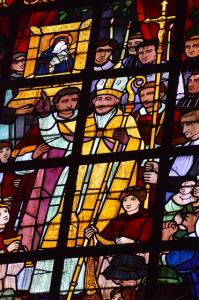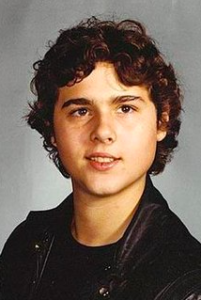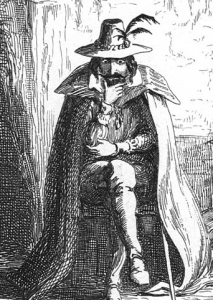THIS SERIES DEALS WITH SEXUAL ABUSE. PLEASE READ WITH CAUTION.
AN INTRODUCTION AND FURTHER DISCLAIMERS
MAY BE FOUND HERE.
O Lord our God, whose property is always to have mercy: Have compassion upon the lambs of thy Church, whom the hirelings abandon to the wolves, so that they are devoured; protect, console, and comfort them, binding up their wounds, and carrying them in thy arms; through Christ Jesus our Lord, thy Son. Amen.
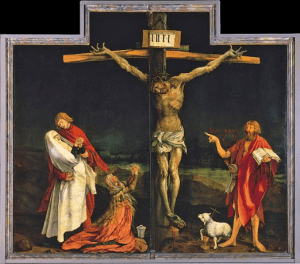
Previous posts in this series: The Victims; The Monster and the Mirror; The Bishops’ Gambit; Pope John Paul II; Pope Benedict XVI; Pope Francis; The Venom of Viganò
What Is the USCCB?
Since the Second Vatican Council, most countries have some kind of national bishops’ conference. The United States Conference of Catholic Bishops began in 1966, drawing from earlier organizations of a similar kind. It covers all dioceses and religious orders in the country,1 and coordinates nationwide statements, policies, and the like for the Catholic Church. All US Catholic bishops, whether active or retired, are members of the USCCB.
A list of bishops fell down on the job over the course of McCarrick’s career. We’ve discussed several in this series, like James McHugh and John M. Smith. Bishop Hughes has come up a few times as well. Let’s turn to some of the testimony about him.
Priest 4
Hughes was McCarrick’s immediate successor as Bishop of Metuchen. He first appears in the report in connection with Priest 4. McCarrick began sexually harassing him in 1984, while McCarrick was Bishop of Metuchen and Priest 4 was still a seminarian. Priest 4 went to Msgr. Anthony Gambino, the vocations director; the results were disastrous.
“I explained what had happened to me and … he treated me like I was somehow at fault for making an accusation.” Gambino admonished Priest 4 that he was making “serious accusations” against the Bishop and that he needed to go to counseling or else he “may not be ordained.”
Monsignor Gambino arranged for Priest 4 to meet with Father Edward Zogby … After the counseling, which also involved taking Priest 4’s confession, Father Zogby wanted to give Priest 4 a hug, and then tried to kiss him and grabbed his crotch. Priest 4, outraged because “it was happening again,” “pushed Zogby down hard in his chair.” “I said, ‘Fuck you!’ and got out of the room.” Priest 4 recalled that “the message I got from that ‘counseling’ session was clear: ‘Don’t think you are going to get anywhere with a complaint against your bishop’ … It was a way of saying: ‘You are powerless; you won’t be believed.’”
Bishop Edward Hughes
McCarrick became the Archbishop of Newark in 1986. It was therefore Bishop Hughes who ordained Priest 4 for Metuchen, in 1988. Meanwhile, Priest 4 had met and befriended Priest 5, another victim of sexual harassment. Hughes liked to meet with each of his priests a year after their ordination. Priest 5 encouraged Priest 4 to take the opportunity to tell His Excellency what had happened. He resolved to do so.
Although Priest 4 did not go into “graphic detail,” he “said plenty to make it clear to Hughes that it had happened to me; that it was McCarrick who did it; that it was sexual; that it was an assault” … Priest 4 recalled that Bishop Hughes, as he listened to the account, “shook his head, grimaced, and turned red.” Priest 4 explained: “Hughes did not react as if he had never heard of McCarrick’s behavior before. He was angry. … But he was not shocked or surprised by what I was saying. … I was speaking to someone who was obviously familiar with what I was describing …” After Priest 4 had finished his account, Hughes assured Priest 4, “I will take care of it.”
I need hardly add that Bishop Hughes did nothing whatever about it.
He did a little, a very little, more for Priest 1 (who has appeared several times in this series). This priest confessed, on his own initiative, to sexual encounters with two minors in 1993. After the priest’s admission—which included statements that McCarrick had abused him—the bishop referred him for treatment.
The therapists and psychiatrists who treated Priest 1 believed his descriptions of McCarrick’s conduct. They even stated categorically that they did not consider him a sexual predator.3 Bishop Hughes replied by saying that he “officially rejected” this conclusion about Priest 1. Despite this, he did return Priest 1 to limited ministry, and later transferred him to another diocese. So, either the bishop was lying when he rejected the diagnosis; or, he did consider Priest 1 a dyed-in-the-wool predator, and restored him to ministry anyway. The canny reader may notice that neither of these explanations reflects very well upon His Excellency.
Priest 3
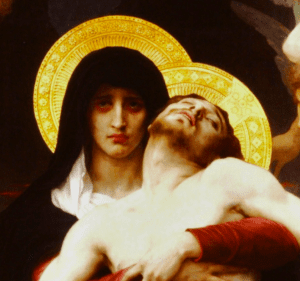
Priest 3 is yet another victim of McCarrick’s with ties to Bishop Hughes. Brazilian by birth, Priest 3 came to Newark to work with its substantial Portuguese-speaking community in 1988. The next year, Archbishop McCarrick obtained permission from Priest 3’s home diocese for him to stay in the area, rather than returning to Brazil. In 1991, McCarrick made advances on Priest 3. He was too confused and frightened to refuse. That autumn, Priest 3 managed to escape to the diocese, though he stayed in New Jersey.
Two years later, he described the abuse in confession. His confessor encouraged him to discuss it with the Bishop of Metuchen. In 1994, he finally did so. Like Priest 4, Priest 3 recounted that Hughes “was not acting like it was something that surprised him. He acted like it was something normal …” However, His Excellency reached a new low in this particular interview: “After Priest 3 finished describing the incidents, Bishop Hughes advised Priest 3 to forget about McCarrick’s misconduct and to forgive McCarrick ‘for the good of the Church.’”
Priest 3 dutifully followed this horrible counsel. He did not discuss the subject with anyone for another sixteen years, until he received therapy. It was at this point that he filed suit against McCarrick, and also informed the Nuncio. Bishop Hughes never did anything else to help Priest 3 or stop McCarrick.
Cardinal Archbishop Donald Wuerl
We might also look at Cardinal Wuerl, McCarrick’s successor at the Archdiocese of Washington. He came there after his time as Bishop of Pittsburgh—a tenure which earned him a whopping two hundred mentions in Pennsylvania’s 2018 grand jury report on clergy sexual abuse. Not all of these mentions are negative. For instance, His Excellency tried for years, against opposition in Rome, to remove Fr. Anthony Cipolla for sexual abuse. Wuerl ultimately succeeded in 1995.
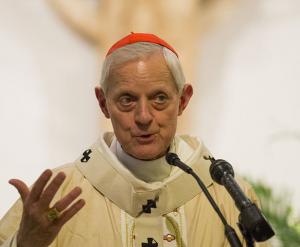
Cardinal Wuerl in 2015
But few people appear in the Pennsylvania grand jury report for doing a good job. Just one of a long list of failures on Bishop Wuerl’s part was allowing Fr. George Zirwas to continue in ministry. This priest made violent child porn. The diocese knew of allegations against Zirwas by 1987; Wuerl became Bishop of Pittsburgh in 1988. And he knew about this, because he approved a $900,000 settlement with two of the victims, including confidentiality clauses! Fr. Zirwas was not removed from ministry until 1996.2
Now, his conduct as Bishop of Pittsburgh does not, in itself, relate to McCarrick. But in 2004, Bishop Wuerl gave a signed statement to the nuncio from Priest 2. Priest 2 was, wouldn’t you know it, yet another of McCarrick’s targets in Newark! In fairness, though Priest 2 did make other claims of abuse, he reported only “inappropriate” conduct from McCarrick—conduct which made him uncomfortable, but didn’t seem overtly sexual at the time.
“Nobody Ever Came to Me”
In 2006, Cardinal Re told the nuncio he had spoken with Wuerl (newly appointed to Washington) about McCarrick. Wuerl said Re made only a passing comment about McCarrick not representing the Vatican despite his extensive travels; this may be true. But Cardinal Re followed up with Wuerl about finding a residence for McCarrick, “so that he does not remain in the ‘Redemptoris Mater’ seminary.” By 2008, Cardinal Wuerl clearly did know about at least some of the allegations. A letter from Nuncio Sambi to Re and Bertone states:
With Msgr. Wuerl we found ourselves in agreement on certain points: 1) The risk of a scandal-inducing campaign against the Cardinal exists, no matter his place of residence; 2) nobody will succeed in convincing the Cardinal to accept “a life in retirement”: it is not part of who he is; if it were to be imposed on him, psychological collapse (depression) and even psychosis are to be feared; 3) the most protected and watched-over place for him is where he currently lives: it is an isolated place far from the city center, the seminarians have no contact with him, his visits are monitored …
Now, I regularly don’t travel all over the world. I find it difficult to believe this could trigger psychosis in anybody, unless they were dangerously unbalanced already. I’d have hoped this would prompt them to urge therapy upon McCarrick. But apparently bishops must always be poised and ready for inaction.
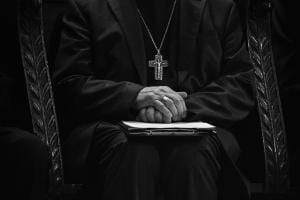
Cardinal Wuerl, when the above letter was shown to him, claimed that
Sambi indicated that [McCarrick’s high profile] was a problem, but he did not say why … No person in this Archdiocese, no former secretary of his, no lay person, nobody, ever came to me to say that anything abusive had ever occurred, or to say that Cardinal McCarrick had engaged in any inappropriate behavior.
This is strictly false. Priest 2’s account was about McCarrick’s inappropriate behavior, and Wuerl read it and gave it to the Nuncio. In fact, according to Wuerl, “I still felt that it was important enough to turn over to the Nuncio … I thought it was particularly important to turn it over since it involved a Cardinal.” But it also beggars belief that the two could have “found themselves in agreement” about the risk of scandal, keeping McCarrick from living near a seminary, etc., if Wuerl truly had no idea why those things were important! Perhaps there’s still some way His Eminence could wriggle out of what his words say—but I don’t see what it could be.
Bishop Michael Bransfield
Other names give a fuller picture of the USCCB. We might speak of the recently deposed and disgraced Bishop Bransfield of Wheeling-Charleston, West Virginia. My friend and fellow Patheos columnist Mary Pezzulo of Steel Magnificat has spoken of him (and more than that, of West Virginia) on several occasions.

In one of the poorest states in the country, Bransfield spent thousands of dollars on a daily basis. To name only a few outrageous examples, he forked over $100 a day just on fresh-cut flowers. He wintered regularly in the Caribbean, spent nearly a million dollars on privately chartered jets—i.e., specifically on privately chartered jets, with more on other forms of air travel—and remodeled the bishop’s residence to the tune of a whopping $4.6 billion.
Bishop Bransfield also abused alcohol and prescription drugs, and nine men accused him of “touching or groping them, kissing or exposing himself to them or commenting on their bodies.” Fr. Kevin Quirk, one of the bishop’s victims and the now ex-judicial vicar of the diocese, made desperate and, I gather, successful efforts to ensure the bishop was never alone with the altar boys after Mass. The Vatican has ordered Bransfield to repay the Diocese of Wheeling-Charleston $441,000. (Even this is a pittance, next to what he took from them.) Pope Francis has not defrocked Bishop Bransfield, but His Holiness has forbidden him to exercise any ministry at all.
Buffalo Buffalo Buffalo
Or there’s Bishop Richard Malone of Buffalo—next to whom even Hughes or McHugh don’t look so bad. In 2018, his diocese released a list of forty-two priests who had been credibly accused of child abuse. This list was technically correct: these priests did have credible accusations against them. Unluckily for Malone, someone leaked internal documents that September. The true total was one hundred and six.
Obviously, rather than admit they had attempted a shabby coverup that endangered and insulted victims, the diocese tried to do damage control. The explanations the diocese offered were as ludicrous as they were despicable. For example, the list omitted a priest who was accused of showing pornography to a 14-year-old, remarking “He does not fit our categories [!], and so we would have to change them to include him.” (Changing categories. The horror.) They also omitted a priest who carried on a seven-year affair with an adolescent girl, beginning when she was 15. The diocese had the gall to state:
We did not remove him from ministry despite full knowledge of the case, and so including him on the list might require explanation.”
No shit, Your Excellency.
“I Will Remove Thy Candlestick Out of His Place”
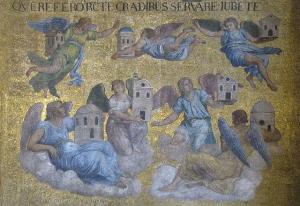
Mosaic of the Seven Churches of Asia from Revelation 2-3, St Mark’s Basilica, Venice
Bishop Malone also disgraced himself by vindictively suspending Fr. Ryzsard Biernat in 2019. One Fr. Art Smith sexually assaulted Biernat while the latter was a seminarian. This was the latest in a series of abuses on Fr. Smith’s part, including grooming a child and inappropriately touching four men. Bishop Malone was aware of all this, but (in a 2015 letter to the Vatican) specifically asked that Smith remain in active ministry.
In an outrageous display of selfishness, Malone stated that Biernat “breach[ed] confidentiality” and caused “further scandal” by giving such incriminating information against him to the media. The hypocrite fired Fr. Biernat, forbade him to live in the bishop’s residence, and revoked his faculties to preach and celebrate the sacraments. So if you try to groom a child for sex, Malone will stick up for you, but if you try to stop that behavior, he’ll fire you and call you a traitor.
As it happens, Malone had already submitted his resignation. He was 73 at the time, and thus had two years left before he had to retire, but he could not weather the storm he had provoked. Pope Francis accepted it only one day after Malone took revenge on Fr. Biernat. That act of spite was one of the last things he did as the Bishop of Buffalo.
Bishop Scharfenberger of Albany succeeded Malone as administrator of the diocese. At the time I’m writing this, there is still no Bishop of Buffalo; the diocese has filed for bankruptcy. I couldn’t find any reports about whether Fr. Biernat has been reinstated by Bishop Scharfenberger more recent than this March. At that point, the issue was still up in the air.
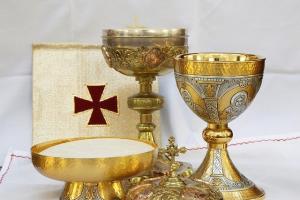
What has happened is that His Excellency concelebrated a Mass with priests credibly accused of abuse. A Mass at which Fr. Smith was not only present, but spoke to Biernat.
He asked if there could be mediation between him and me because he never wanted to hurt me—he just wanted to show me how much he loved me and how much he cared for me. He said that he still loves me and it is all a misunderstanding. I said to him that there is no misunderstanding. If you go into somebody’s bed and climb under the sheets and grab their genitals and kiss their neck there’s no misunderstanding there.
Now What?
These are examples; I could give more. But I doubt anyone wants more. After my own life and my reading, I’ve built up a high tolerance for this trash, and even I don’t want to continue writing about this.
Is this all there is to the USCCB? I hope not. I don’t know. In a group of over four hundred people, I’d assume at least some of them wouldn’t be completely corrupt, if only by chance. There are a handful who seem like good men: Bishop Flores of Brownsville, Bishop Seitz of El Paso. Maybe Bishop Persico of Erie: his record is definitely not perfect, but he did testify to the Pennsylvania grand jury, which the other bishops wouldn’t do. But, like I’ve said before, trusting how people seem is exactly what got us into this disaster.
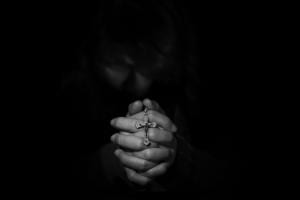
I mean—how the fuck do you reform a system that’s this sick? How are we ever supposed to trust a single bishop again?
Final installment: Quo Vadis
1Puerto Rico has its own bishops’ conference, while US territories in the Pacific Ocean are part of the Episcopal Conference of the Pacific (except Hawaii, whose bishop is in the USCCB).
2Zirwas then moved to Cuba. He was murdered there in 2001.
3I would be remiss if I didn’t note that one of these professionals—Dr. Richard Fitzgibbons, who pops up in the report several times—seems pretty iffy. SNAP has raised questions about his impartiality, and a number of his patients give very troubling reviews of his practice. He also coauthored a truly vile document endorsing ex-gay therapies, Homosexuality and Hope, for the Catholic Medical Association.


